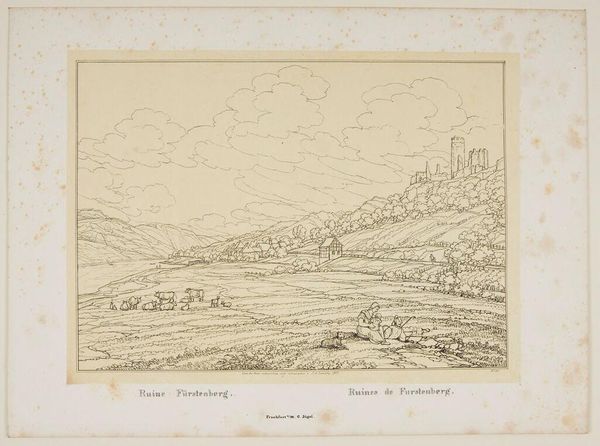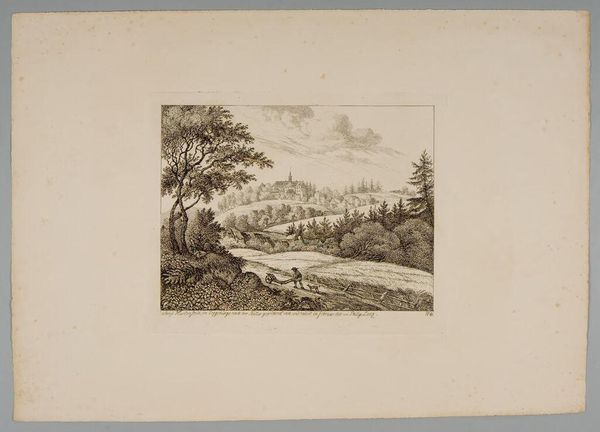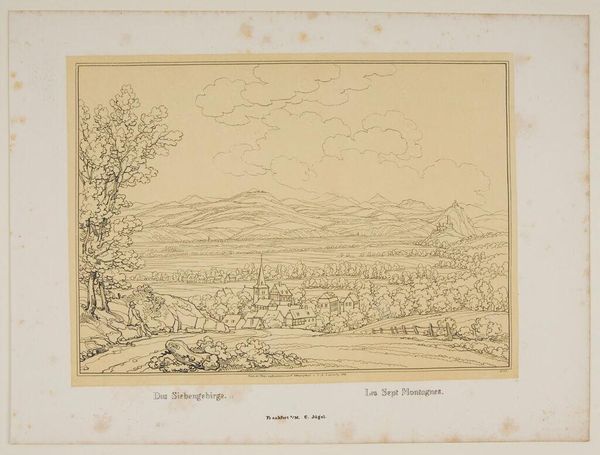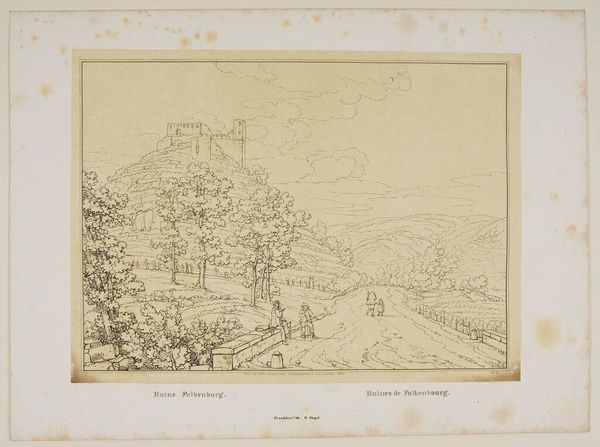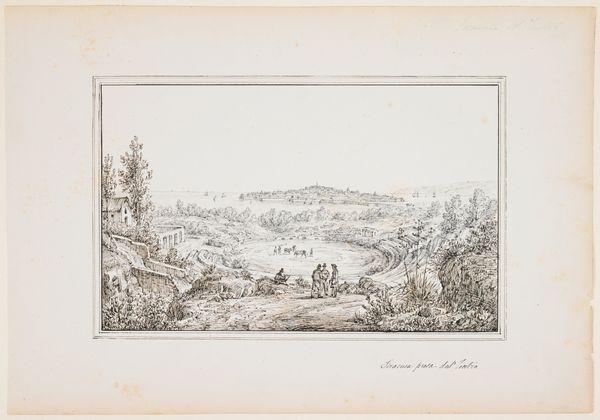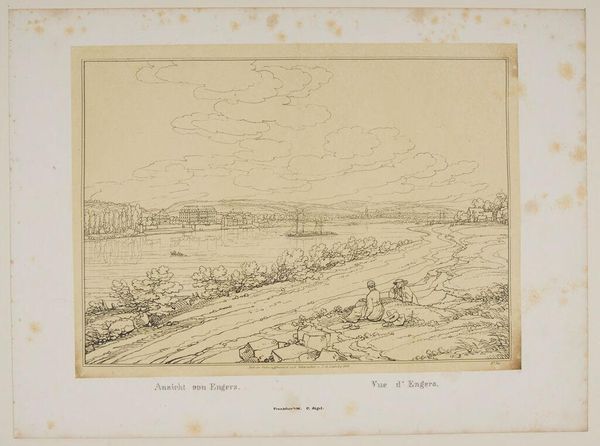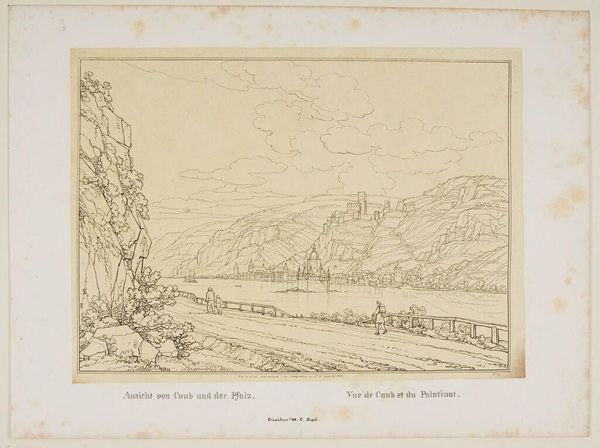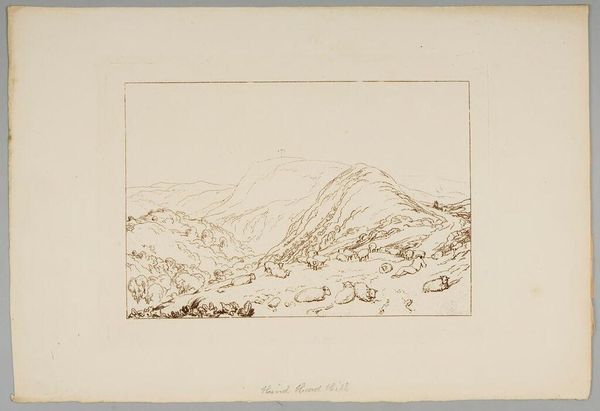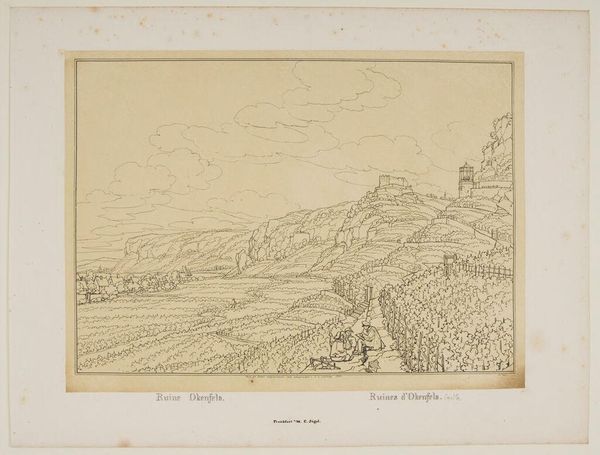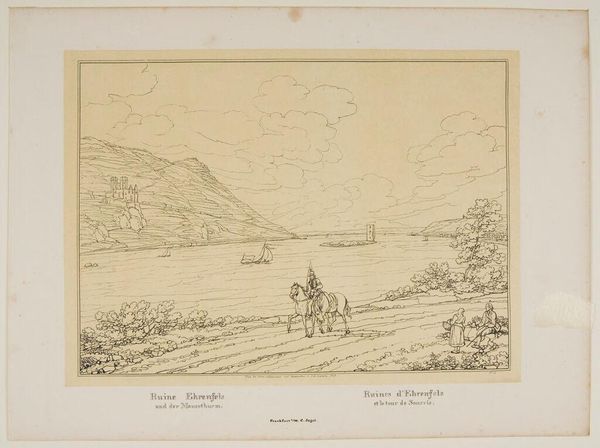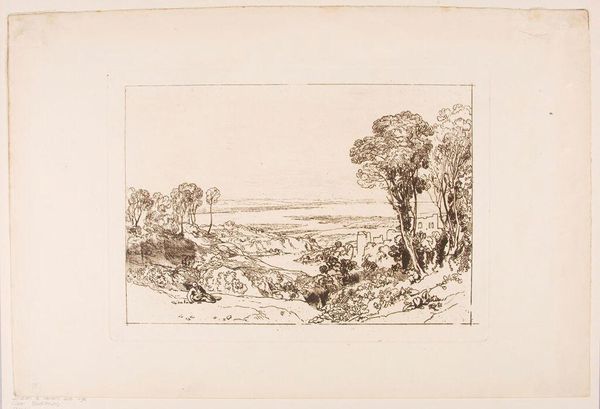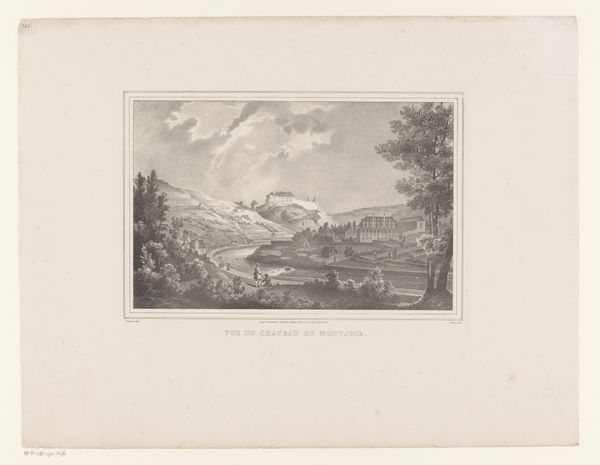
Copyright: CC0 1.0
Curator: Here we have Johann Adolf Lasinsky’s “View of Oberwesel,” a very detailed line drawing. Editor: It’s incredibly precise, almost clinical. It makes me think of architectural renderings more than a picturesque landscape. Curator: Indeed, this reflects a shift in the purpose of landscape art. No longer just aesthetic pleasure; these views became tools for documenting and even promoting particular places. The Rhine Valley, for example, was undergoing massive tourism development at this time. Editor: I see that. And those carefully rendered vineyards point to the economics of the region. You can almost feel the labor involved in cultivating them. Curator: Exactly! It highlights the intersection of nature, commerce, and the burgeoning tourist industry. Editor: Thinking about the production, the sheer number of lines must've been painstaking. It makes me wonder about the artist's role. Was he simply a recorder, or something more? Curator: He was recording, certainly, but also shaping perception. This image becomes part of the narrative of Oberwesel as a desirable destination. Editor: Interesting. I initially saw it as detached, but now I understand its role in shaping cultural and economic landscapes. Curator: It's a fascinating example of how art functions within a larger system.
Comments
No comments
Be the first to comment and join the conversation on the ultimate creative platform.
